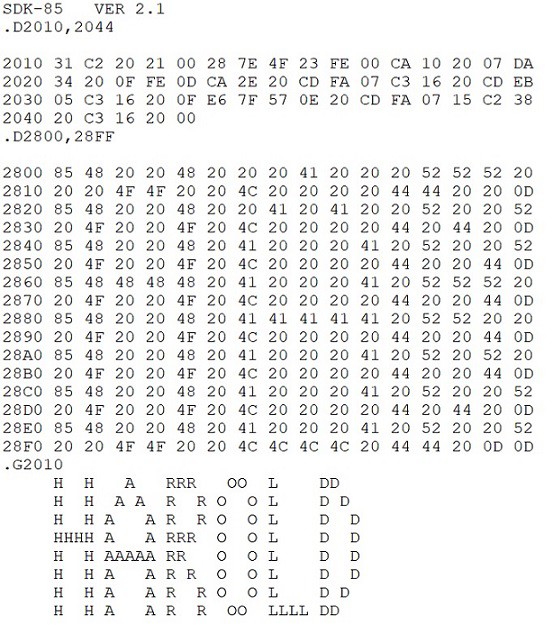
/*
* 0x converter program for hex strings
* from eeproms, assemblers, etc. To enable
* C program strings into the flash programmer
* module programming the three 28C16 eeproms that
* ORG at :
*
* CS2 1000-17FF
* CS6 3000-37FF
* CS7 3800-3FFF
*
* cut and paste hex object machine code text strings
* into the Nano eeprom programmer program, cut and paste
* the conveted '0x' strings, then re-program the Nano with
* the new SDK-85 programs using the 'Move' M command to put
* programs into RAM. A much quicker method than using the
* very slow 110 baud 'I' command thru the serial port!
*
*/
char eeprom_string[] = "AABBCCDDEEFFAABBCCDDEEAABBCCDDEE";
byte eeprom_bytes[16];
void setup() {
Serial.begin(9600);
}
void loop() {
eeprom_0x();
}
void eeprom_0x(){
for(char i = 0; i < 16; i++)
{
byte eeprom;
char a = eeprom_string[2*i];
char b = eeprom_string[2*i + 1];
eeprom = Check_If_Hex(a)<<4 | Check_If_Hex(b);
eeprom_bytes[i] = eeprom;
Serial.print("0x");
Serial.print(eeprom_bytes[i], HEX);
Serial.print(",");
}
Serial.println("--------");
while(1);
}
char Check_If_Hex(char ch)
{
char returnType;
switch(ch)
{
case '0':
returnType = 0;
break;
case '1' :
returnType = 1;
break;
case '2':
returnType = 2;
break;
case '3':
returnType = 3;
break;
case '4' :
returnType = 4;
break;
case '5':
returnType = 5;
break;
case '6':
returnType = 6;
break;
case '7':
returnType = 7;
break;
case '8':
returnType = 8;
break;
case '9':
returnType = 9;
break;
case 'A':
returnType = 10;
break;
case 'B':
returnType = 11;
break;
case 'C':
returnType = 12;
break;
case 'D':
returnType = 13;
break;
case 'E':
returnType = 14;
break;
case 'F' :
returnType = 15;
break;
default:
returnType = 0;
break;
}
return returnType;
}
Github link with this routine integrated into the 28C16 eeprom Flash programmer to follow soon.
------> https://github.com/haroldmoore/Intel-SDK-85-Programmer

Here is a picture (above) of my SDK-85 as it is now, the teensy takes care of the boot-up timing, the communication to convert the 110 baud to 9600 baud, and the VFD display, (at the top).
---->
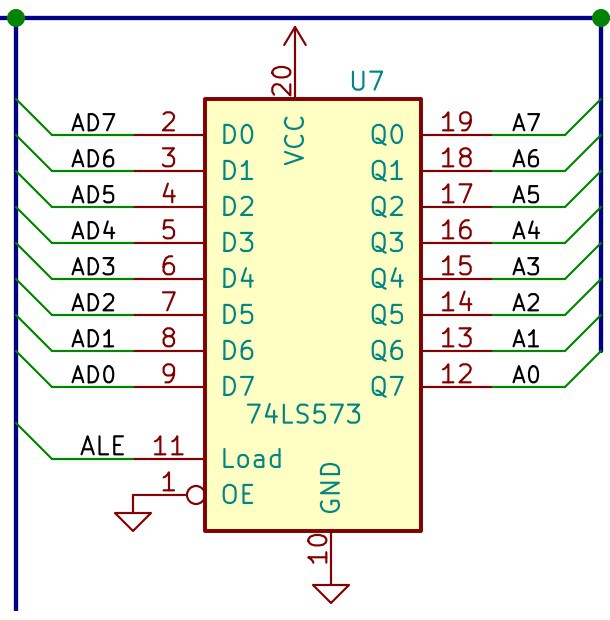

To address the three 28C16 eeproms I use a 74ls573 to 'de-multiplex' out the low order address pins from the data bus, ( Shown in upper right corner with the three 28C16 eeproms ).
I use CS2 , CS6, and CS7.

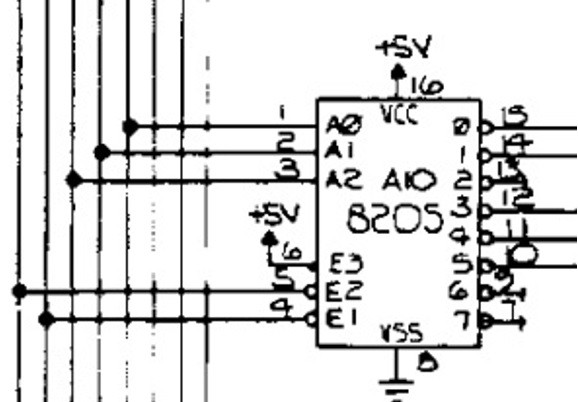
To program the 28C16 eeproms I use Ben Eaters schematic, ( on YOUTUBE ) and his modified code.


Here is a picture of the 110 baud connector, and the 9600 baud connector. ( The upper left DB9 connector, and below the small TTL to USB converter ).
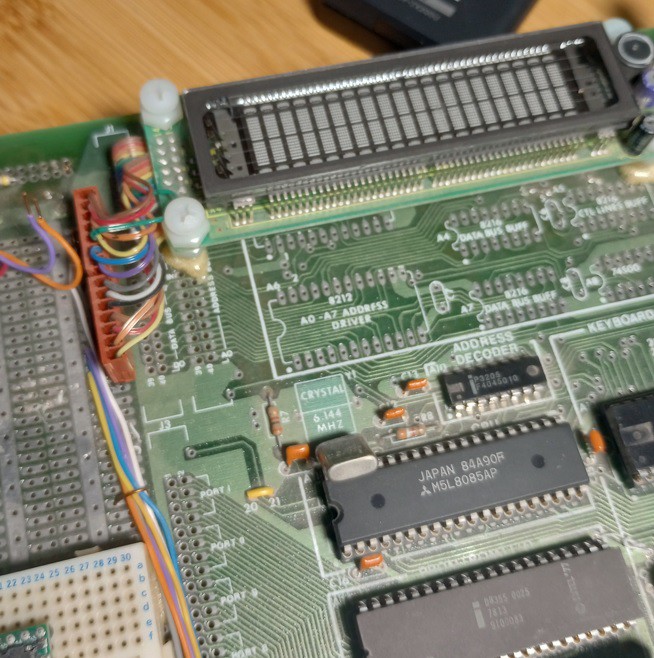
Here is a picture of the VFD display, controlled by the teensy.
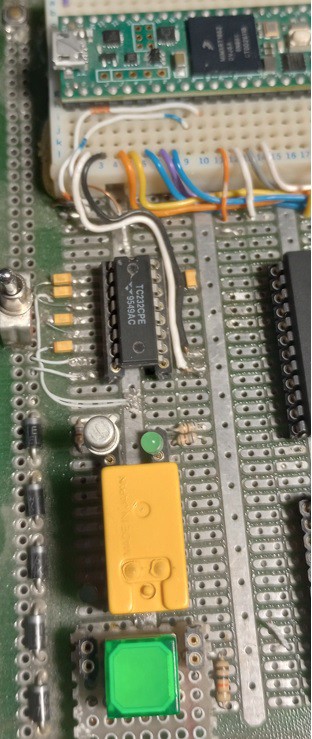
I have a relay for the reset control of the SDK-85, because I cycle power as well.

Originally the 'SDK-85' monitor was made to work with the ASR33 Teletype, here is the circuit installed on the 'SDK-85' board, so that those with computers with a serial port will be able to communicate and debug assembly programs at 110 Baud. ( Or pipe it into a microcontroller first to up
the Baud rate to work with newer equipment).
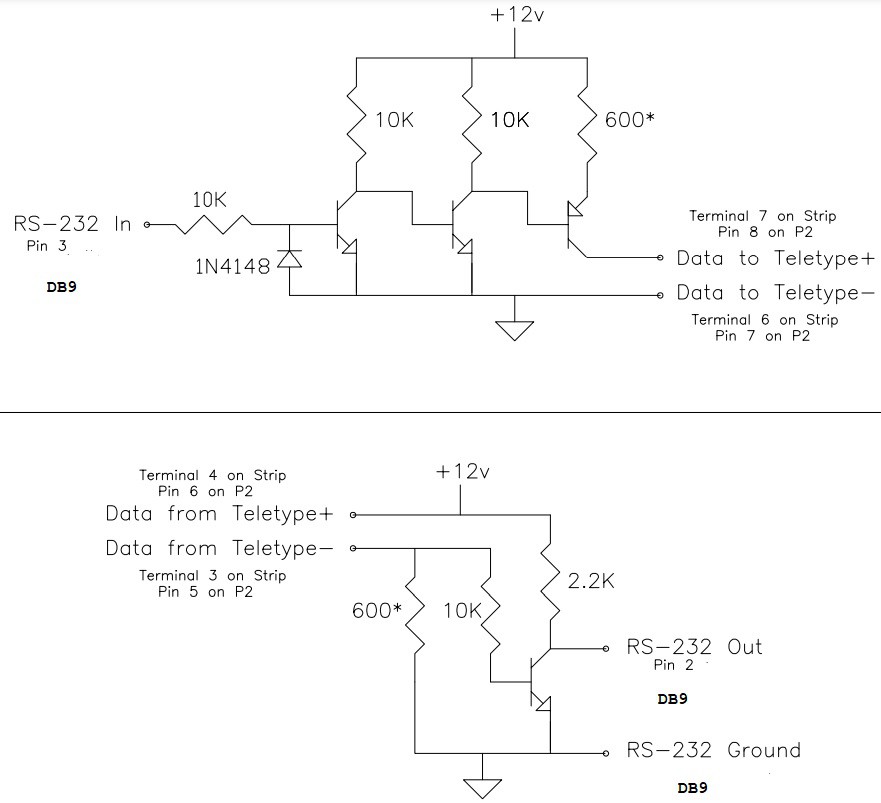
And here is the circuitry installed within the ASR33 Teletype printer. I used DB9 connectors, only using pins 2 , 3 , and 5 on the DB9 connector. pins 1 , 4, and 6 are shorted together, and pins 7 an 8 are shorted together. This way TX and RX will always be ON.
Here is a video of the SDK-85 , computer, and Teletype in action ---> https://youtu.be/U0AjybMDZm8
 haroldmoore016
haroldmoore016